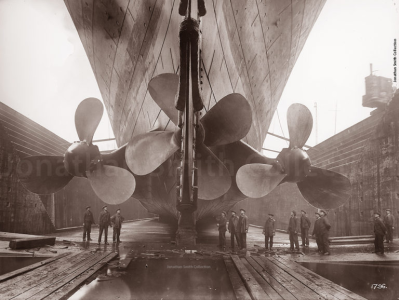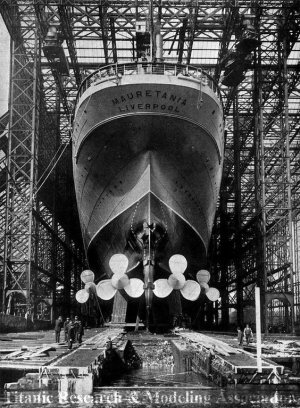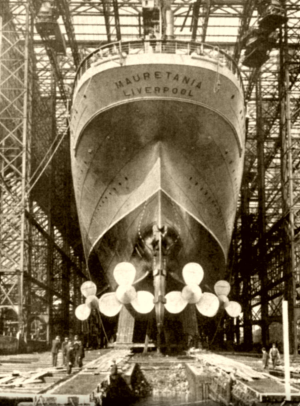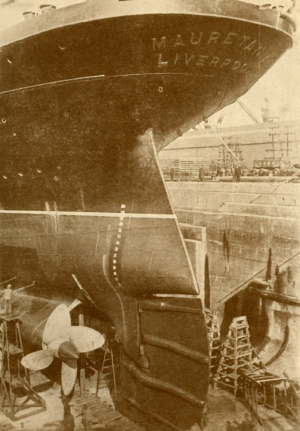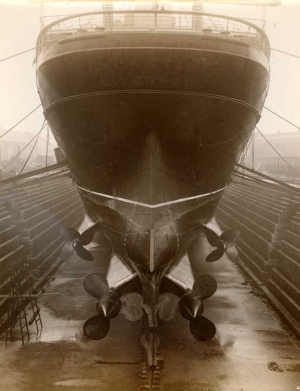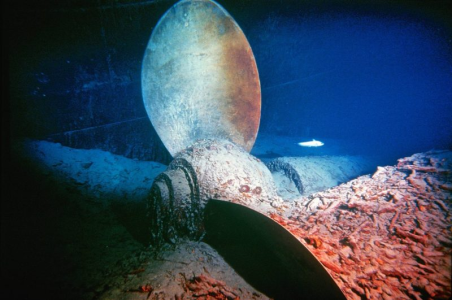History of the Image:
This striking image showcases the sheer scale of the massive shipbuilding projects in the early 20th century. The ship in this photograph is either the RMS Olympic or its famous sister ship, the RMS Titanic, both built at Harland & Wolff shipyards in Belfast, Northern Ireland.
• The Propellers: The three colossal propellers seen here were designed to power these ships through the North Atlantic at speeds of up to 21 knots. The center propeller was powe…
See more
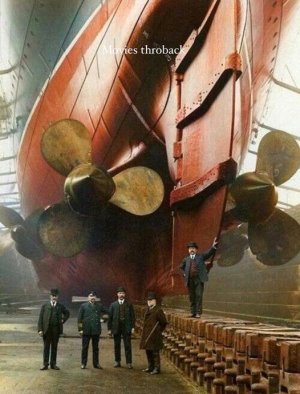
This striking image showcases the sheer scale of the massive shipbuilding projects in the early 20th century. The ship in this photograph is either the RMS Olympic or its famous sister ship, the RMS Titanic, both built at Harland & Wolff shipyards in Belfast, Northern Ireland.
• The Propellers: The three colossal propellers seen here were designed to power these ships through the North Atlantic at speeds of up to 21 knots. The center propeller was powe…
See more






